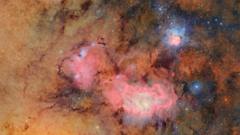In a significant turn of events, a team of astronomers contacted the scientific community in April with exciting news regarding the potential discovery of life on the exoplanet K2-18b, located over 120 light-years from Earth. This finding sparked interest and debate worldwide; however, recent analyses have cast doubt on those claims.
Independent research conducted over the past month has shown that the supposed evidence of life—specifically a molecule in the planet's atmosphere—does not hold up to scrutiny. Three separate studies have arrived at a consensus: they do not find convincing proof that K2-18b harbors life.
Luis Welbanks, an astronomer from Arizona State University and co-author of one of these studies, succinctly stated, “The claim just absolutely vanishes.” This reassessment of K2-18b reflects ongoing challenges in the field of astronomy, particularly when it comes to studying distant celestial bodies.
The discussions surrounding K2-18b highlight the intricate techniques astronomers must employ to observe such faraway planets. Unlike nearby Jupiter, which shines brightly and can be easily seen, K2-18b remains largely obscured from conventional gaze, necessitating sophisticated observational methods.
Some successes have been achieved, notably with the James Webb Space Telescope, which offers enhanced capabilities in detecting subtle starlight patterns to decipher the atmospheric components of far-off worlds. This innovative approach has previously yielded valuable insights, as demonstrated in 2010 with the observation of GJ 1214b, garnering interest in what lies beyond our solar system.
However, despite the excitement generated by the possibility of life on planets like K2-18b, the current findings serve as a reminder of the complexity of astrophysical research and the importance of critical evaluation in the ongoing quest to unveil the mysteries of the universe.























